Create a Clean and Organized Home with These 35 Tips
- Published on January 10, 2023
- by Jamie Forbes
It’s easy for homes to become disorganized and full of clutter. Whether you have numerous belongings or always seem to accumulate more, it’s easy for it to become unmanageable. If so, consider incorporating structure into your cleaning routine. Creating simple habits will help you avoid the clutter and mess that always seems to accumulate at home. Once you begin practicing these new habits, you’ll notice how much easier it is to create a clean and organized home.
If you’re unsure where to start, don’t worry; we tapped the top cleaning and organizing experts to help you turn your home into a peaceful haven. Whether you live in an apartment in Boston, MA, or a house in Round Rock, TX, use these 22 tips to help keep your home in tip-top shape.
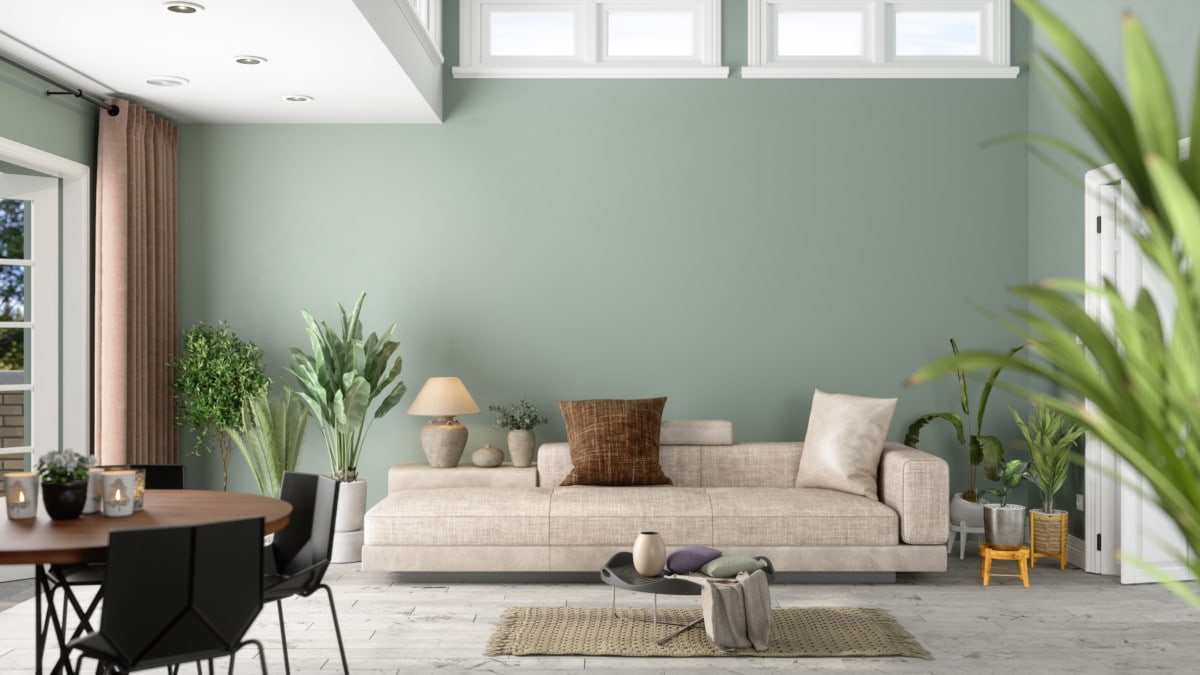
1. Explore your attachment to your belongings
The first steps of most decluttering projects don’t usually involve decluttering. An essential first step of any project is redefining the space in your mind and resolving attachment to your items.
“It’s impossible to organize needless clutter and attachments,” says Maristella Bertram, MBA, Certified Professional Organizer, and owner of My Space Reclaimed. “Take the time to work through your items individually and consider whether you actually need them.” This method helps you finish the hardest work first, making the rest of the project more manageable.
2. Start the year by decluttering your home
If you want to organize your home, the beginning of a new year is the perfect time to start. Make sure you’re ready to commit to long-term change and be sure to set small, achievable goals.
Lindsay Palmgren, Professional Organizer with 3e Organizing, suggests starting with one question: “What do you want from your space?” “By setting this intention, you can then make decisions that align with goals,” she says. “Now, you can move from room to room looking for items that don’t serve your needs.”
3. Reframe the decluttering process
Decluttering can be daunting, especially if you have a large or crowded home. If decluttering sounds difficult, “try reframing the focus of the project to reorganizing and cleaning,” advises Heidi Roed, owner of Life Easier. “Simply interacting with belongings you walk by every day and evaluating them can ignite the decluttering process.
Decluttering often happens naturally when people begin looking through their belongings. Now, you can dig into the project.
4. Be realistic about your space
Always understand your goal, space, and lifestyle when setting up a decluttering system. “For example, don’t organize for the space you wish you had,” notes Stephanie Treantos, founder of Lemonaid Solutions. “Once you establish a system, you can start decluttering, sorting, and labeling.”
5. Start small and take the project slow
Many decluttering projects can feel overwhelming, even after you reframe them. Lisa Haubenstock, owner of Lisa The Organizer, suggests starting small to avoid feeling overwhelmed by the project. “For example, start with one drawer or one shelf in a space before moving on to the entire room,” she says. “This way, you can get over your initial fears and start organizing confidently.”
Additionally, try moving through your house every day and look for one item to declutter. “This can help reduce one stress factor from your desk, your home, and your life,” says Annette Kurtz, space clearing expert. “Go a step farther and create a simple, relaxing morning routine that centers your body in the day.”
6. Minimize to make the project easier
As you start working through your belongings, you may be spending more time mulling them over than you are decluttering.
Julie Whiting, Professional Organizer with The Decluttering Co., notes that the best way to organize is to minimize first. “When you have a lot of stuff, it’s easy to spend countless hours moving it around, managing it, and contemplating it,” she says. “To help, get rid of as much as possible before organizing what you own into logical categories.”
7. Incorporate a planner into your routine
Being organized also means being in control of your time. “Try using a colorful planner to keep track of goals while expressing your artistic side,” advises Shelby from Little Coffee Fox. “This simple combination of utility and creativity can make planning fun and repeatable.”
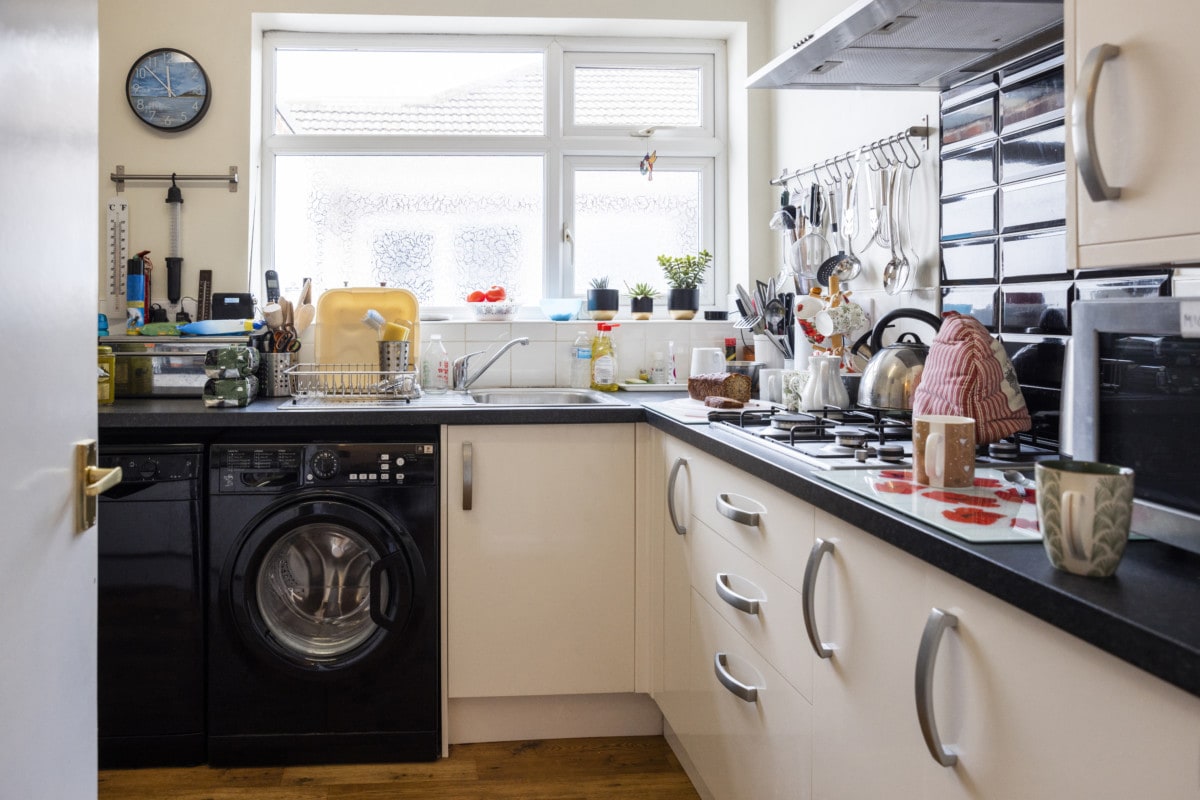
8. Organize one item at a time
Working consistently and methodically is often the best way to get your home from cluttered to comfortable. “You’ll be amazed at how easy this is,” says Lani Boggs, Founder of Declutter by Lani. “The easiest way to start is by picking a room you feel is your biggest concern and removing anything unnecessary, setting up bags for garbage and donations. Work through one item at a time – before you realize it, you’ll have organized an entire room.”
Aside from getting rid of visual clutter, having a spot for everything helps you find it easily when you need it. “Try dedicating parts of your closet or shelves for specific items, as well as grouping belongings together for extra ease,” suggests the team at Closet & Beyond
When you run out of items in one room, take a break before moving on to the next. Avoiding burnout is essential to maintaining a clean and organized home.
9. Organize as you move through your home
Creating a clean and organized home doesn’t have to be secluded to one or two days every week; it can be something you consistently do every day. “For example, if you walk through a room and see something out of place, pick it up and carry it with you,” notes Diane Quintana and Jonda Beattie from Release Repurpose Reorganize, LLC. “Put it away if you can, or at least take it near where it belongs,” they say. “When you pay attention and act when you see clutter, it’s harder for it to accumulate.”
If you work better with routine, the team at Mulberrys Garment Care suggests creating a short, manageable organizing routine. “Create small and routine tasks that help you keep your space clean,” they say. “Once you’re done with a task, clean up after yourself instead of leaving things to pile up.”
10. Organize for a short amount of time every day
An organizational key is to do one or two small things every day to make your life easier tomorrow. “Wash a load of laundry before you go to work each day and fold it before you go to bed,” recommends Shae Alexander, owner of Home Harmony Organizing. “Consider doing dishes throughout the day as well,” she says. “If you do routine tasks every day, you only help yourself in the long run.”
Another option is to take ten minutes every evening to walk through your home and pick everything up that doesn’t belong. “Keep an empty basket under a console or tucked into a closet or corner,” advises Heather Davies, a professional organizer with BirchTree Organizing. “Pull it out at the end of the day and take ten minutes to gather items and return them to their homes.”
11. Make lists to help organize your life
Lists are a useful tool to stay organized. Maggie Page, owner of Maggie’s Organizing and Staging, suggests writing everything down that’s on your agenda for the day or week . “This is a great way to prioritize everything you have to get done,” she says. “As your life gets busier, it becomes easier to forget daily tasks.”
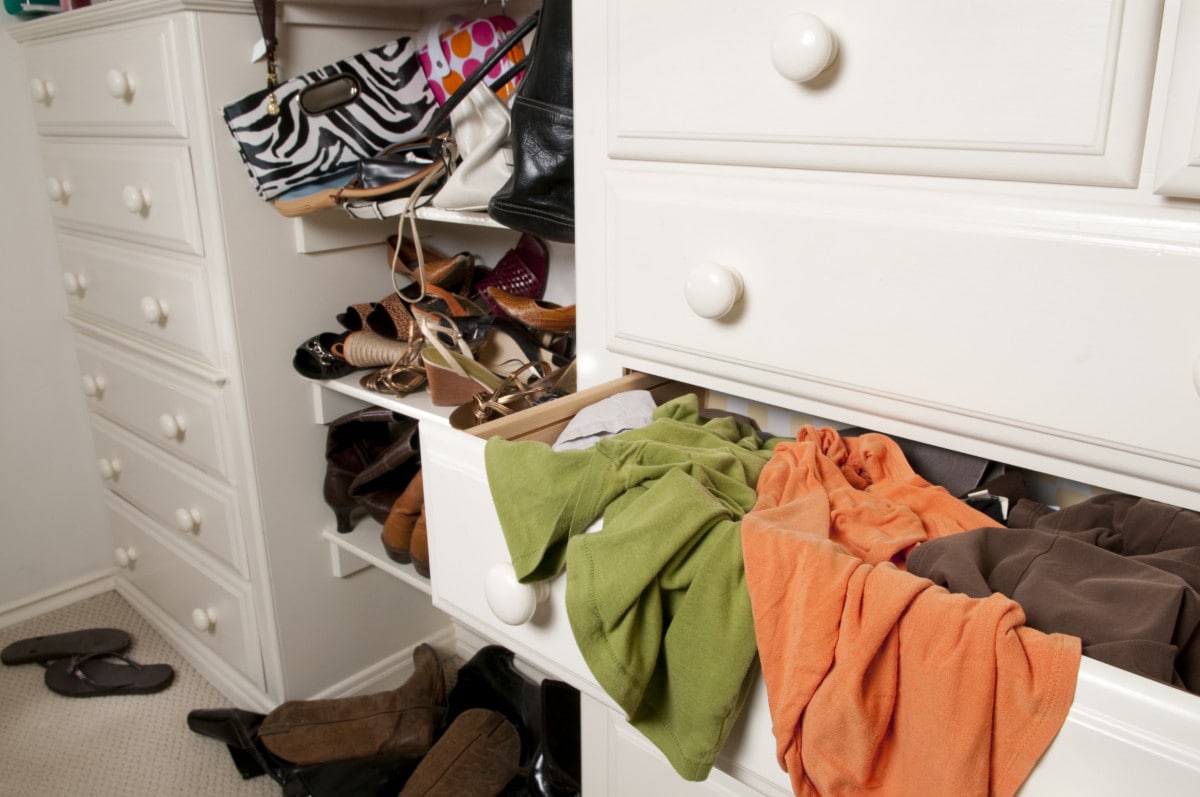
12. Keep everything in its place
As you move through your home, be mindful of what you’re picking up and where you’re putting it. “When you pick something up, always take the time to put it back,” says Logan Gerard, CEO of Keyroo. “The more items you leave out, the bigger and more daunting the mess becomes,” he says. “When you take something out of a drawer, closet, or shelf, take the extra moment to put it back when you’re done.”
13. Create a thorough decluttering routine and schedule
Many of the first organizing steps apply to people with all sizes of homes. However, it can be challenging to maintain an organized home if you have a large family or a big house. To help, “try setting aside 15-minute time chunks to accomplish simple organizing tasks,” suggests Collette Oswald, owner of Organizing by Oz. “Also, be sure to establish a reward system that works best for everyone,” she says.
Another option is to create a schedule for the family. “An organizing schedule can be a great tool for large families,” notes Lia Brady, owner of Organize With Lia. “Include tasks for every day of the week and every household member. These can involve cleaning, decluttering, organizing, donating, and more.
Additionally, keep the schedule simple and manageable, so everyone can feel accomplished.
14. Downsize and organize
Ideally, you downsize before organizing. “First, take stock of what and where you currently store items and ask yourself if that’s the best spot for them,” notes the team at Rev-A-Shelf. “Next, purge your items using the six-month rule, removing anything you haven’t touched in the last six months,” they say. “Organize the remaining items using stylish, convenient drawers and pullouts.”
The team at Day Designer, creator of luxe daily planners, agrees that downsizing is essential to any organizing project. “To quickly declutter your workspace, you first need to clear everything out,” she says. “Then, only add in the items you really need. Doing this is an easy way to eliminate clutter while giving you a fresh, clean slate to work with.”
15. Create simple processes to make organizing easy for kids
Kids regularly make messes without cleaning them up, leading to more work for you. To avoid frequent messes and a cluttered home, consider teaching your kids the importance of organization. “Encourage your kids to maintain their belongings by teaching them proper maintenance,” suggests Stacy Thomes, owner of Stacy Thomes Organizing. “If you create organized systems with your children’s clothes, toys, school supplies, and accessories, it’s easier for them to put them away when it’s time to clean.”
Additionally, Dionne Myhre, founder of Home Made Our Way, suggests delegating tasks to your children. “Kids as young as two can participate in tidying up their play area,” she says. “Depending on the age, simply label bins with pictures and words and create a reward system when they put items in the right place.”
Make sure to add a reward to sweeten the deal. Rewards can motivate children to continue cleaning up after themselves.
16. Create organizing systems for your kids
Kids stay organized when organization systems are simple and easy to understand, regardless of how much they value cleanliness. “While you might love sorting all the toys into 15 different color-coded bins, your child will spend 20 minutes standing in front of those bins trying to decide which one their toy goes in,” states June Doran from This Simple Balance. “If you want to make clean-up a quick task, use simple, broad categories and large bins.”
17. Try an organizer system tailored for children
If your child struggles to maintain their belongings, investing in a system tailored to their needs, such as Micuna’s Little Things Organizer, can make a huge difference. “There are many options that offer a place for their clothes, shoes, boots, accessories, and even toys and books,” notes Hilary Abbott from Micuna USA. “With these systems, children can learn about organizing, experience autonomy, and practice finding everything they need.”
If your children aren’t motivated or are still struggling, minimize their responsibility to just once per week or even one set of items. Work on their timeline and gently encourage them along.
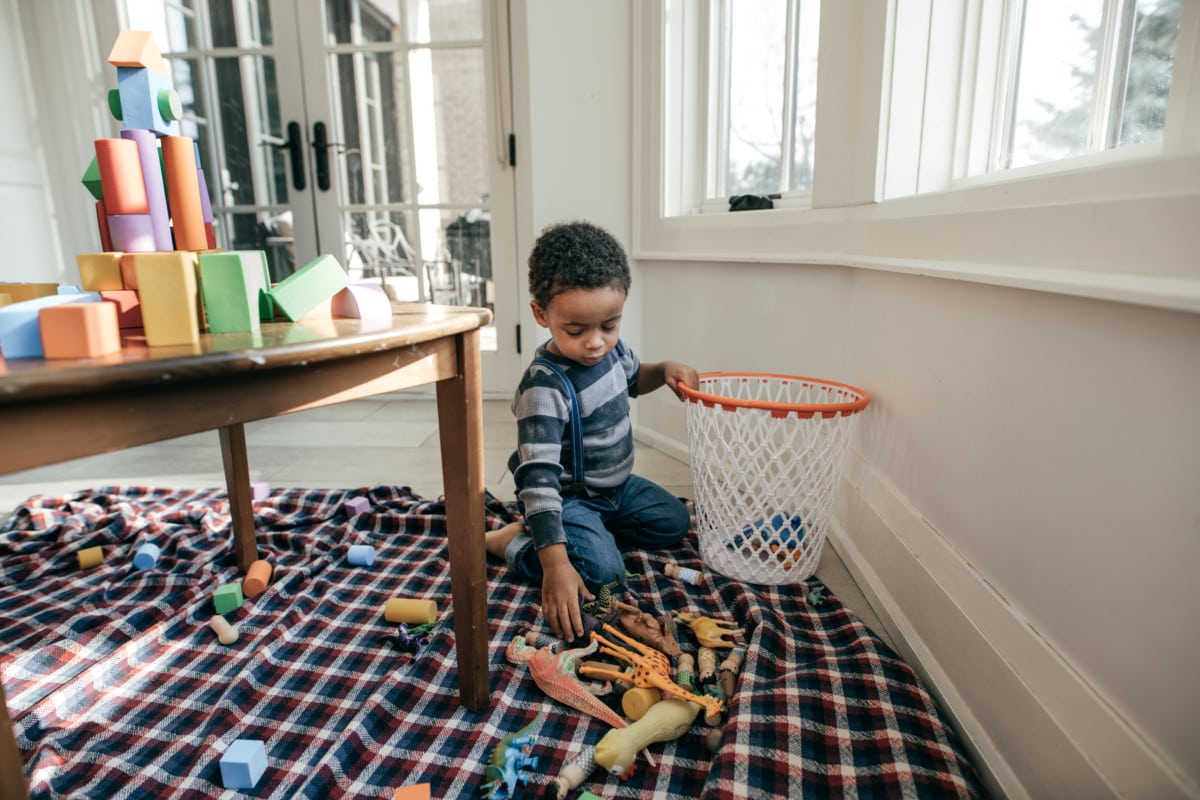
18. Turn organizing into a game for the whole family
Another option for parents is to turn organizing into a game. “Each night, about an hour before bedtime, have everyone in the family race around the home putting everything where it belongs,” suggests Jill Fleming, owner of Smart Organizing Solutions. “The person who finishes first wins. At the end of each week, the person with the most ‘wins’ gets to pick a fun activity for everyone.”
You can also play music to lighten the mood or motivate any tired members of your household. “Listen to music that your family loves to keep their brains focused and clear any mental clutter,” proposes Shannon Tamme, Certified Professional Organizer with Life Synchronized. “Working with music is therapeutic and can help everyone dance the clutter away.”
19. Take control of children’s artwork
Children often create a lot of artwork, especially at school. Even with strict organizing schedules, it’s easy for their art to get out of control, especially if you want to keep all of it. To help, “consider spending a minute or two with your children to talk about their artwork,” notes Gari Julius Weilbacher, decluttering coach and owner of Wild Brook Coaching. “Then, place it in a designated area that you consistently rotate throughout the year, only keeping both of your favorite pieces.”
While it would be great to be able to keep all of your child’s artwork forever, it’s not practical or necessary. Betsy Fein, CEO of Clutterbusters!!, suggests minimizing clutter by following the “Three F Rule:”
- Frame: Some outstanding pieces of artwork deserve framing.
- Flush: No need to keep random scribbles or works that don’t meet your standards.
- File: Not all art is frameworthy, but it may not be flush-worthy either. Keep those items that demonstrate talent and those you may someday decide to frame.
You can use this method if you or another household member also likes to create art. Be reasonable and stay aware of your attachment to individual pieces of art.
20. Designate baskets for communal clutter
A great organizing solution for larger families is to incorporate beautifully decorated baskets into the main living areas of your home. “Use these baskets for items that don’t belong or that people no longer play with or read,” says Courtney Inabinet, owner of Calm The Chaos With Courtney LLC. “This allows for quick resets without losing any items.”
Another option is to put additional baskets outside of everyone’s room. “Create a bin for each person that they can take to their rooms at the end of each day,” says Collin Wheeler, founder of 123JUNK, a sustainable waste management company that prioritizes donating and recycling unwanted items. “This can help prevent clutter from building up and allows people to have agency over their belongings.”
For bonus points, incorporate baskets that fit your room’s style and aesthetic.
21. Labeling can be key
Labels can act as a reminder to store items in their proper homes. “They also help you identify when you’re running low and need to refill certain items,” notes Shannon Krause from Tidy Nest. “Everything should have a home,” she says. “Go the extra mile by addings notes to your labels, like expiration dates and cooking instructions.”

22. Manage your paper products
The daily influx of paper from mail, school, and work can be overwhelming. “Commit to taking just five minutes every time you walk through the front door to sort through your paper quickly,” suggests Lisa S. Griffith, Certified Professional Organizer with Griffith Productivity Solutions. “For bonus points, set up a ‘mail processing center’ with a trash can, recycling bin, small shredder, and two baskets or paper trays.”
Additionally, when sorting, “assign a dedicated spot for mail, like a paper sorter, basket, or a hanging wall container,” notes Kathe Roberts, Certified Professional Organizer and owner of Top to Bottom Organization. “Be sure to recycle junk mail as soon as possible to avoid unnecessary clutter.”
23. Be mindful of your organizational purchases
Bins, baskets, and containers are great, especially for paper products. However, don’t get ahead of yourself and buy them before you declutter. “Wait and see which items are leftover before measuring your space and making your purchase,” says Joanne Duchrow, Certified Expert Organizer with Me In Order.
Organizational items are perfect in moderation, but can quickly become clutter if you buy too many.
24. Organize your photos
Photos are a common clutter culprit in most people’s homes. Many people store them in boxes they never open or hang every one they take, leading to a cluttered aesthetic. Ideally, you only keep photos that mean the most to you, and purposefully store the rest in labeled, organized boxes.
If you’re having trouble, “a great way to get help is by accessing beginner photo-sorting courses online,” advises Michelle Jensen, owner of Michelle Marie Solutions. “These courses are aimed at beginners and may not suit your needs,” she says. “For additional help, you can always reach out to an authorized photo organizer.”
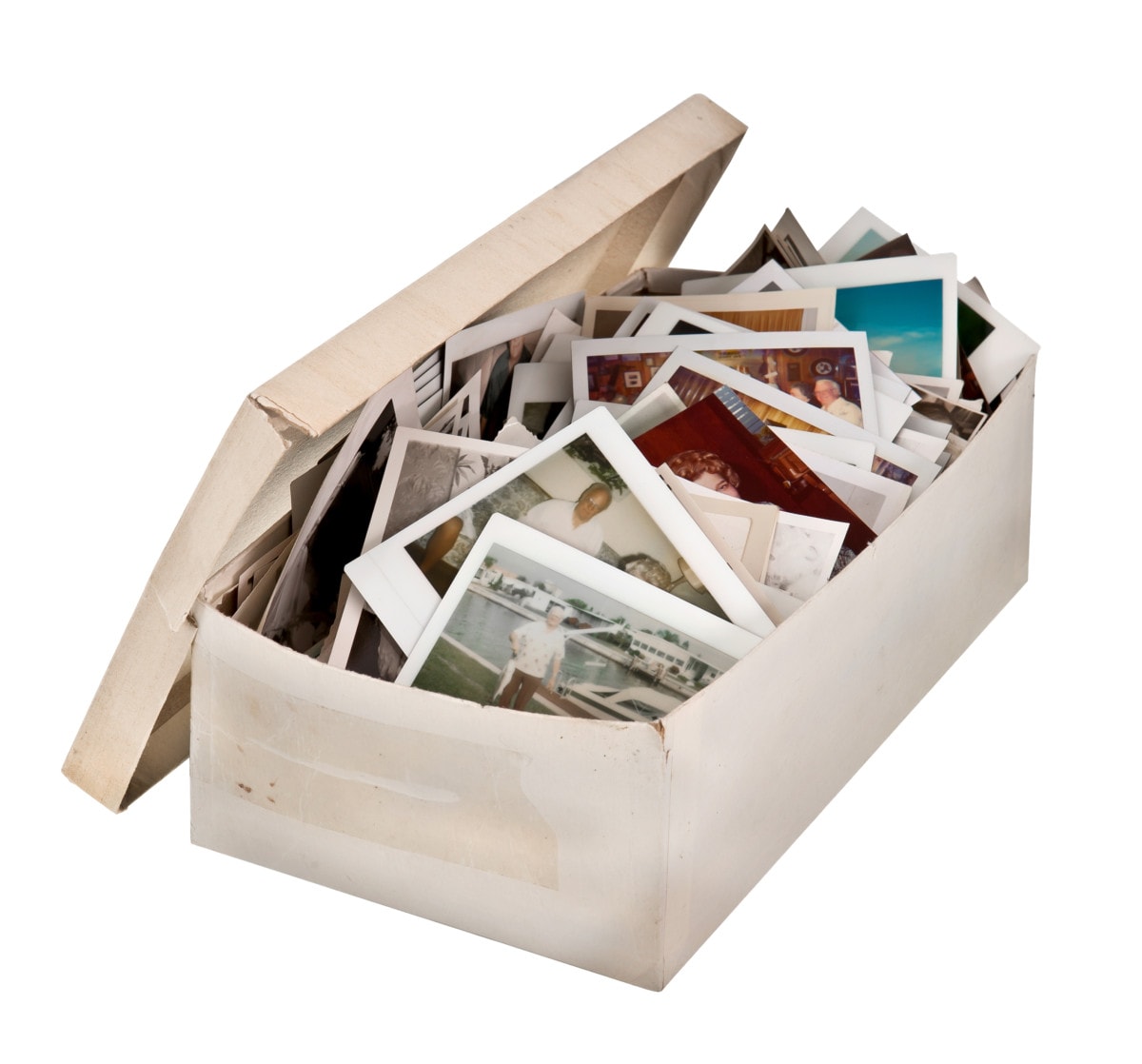
25. Stay on top of your digital memories
Another option for photo storage is to invest in digital solutions. Digitizing can free up valuable space throughout your home and allow you to spend time organizing elsewhere.
If you decide to digitize, “make sure to work through your backlog every month and choose only your favorites,” advises Nichole Healy from Memory My Way. “This will help decrease the digital clutter and help you keep what matters.”
Consider investing in a personal hard drive to secure your most important memories. This way, you’re always in control of your most valuable memories.
26. Keep your sheets organized
While they may not seem like something that often piles up, sheets can quickly get out of hand, especially if you frequently host guests. Alleviate the problem by creating an organizational system. “Group sheets by size and color, and store them closest to where they belong,” suggests Tracy Di Lorenzo, owner of House of Glow. “This way, a random spill or a large family holiday won’t lead to chaos.”
27. Create a space for nearly-expired food
Kitchens are a common area for clutter to build up, especially cluttered food. To help, “designate an ‘Eat First’ bin in your pantry for snacks that have been opened or will expire soon,” recommends Debbie Bush owner of Basket & Bin. “Place this bin in the most accessible spot near eye level so that it’s easy to see,” she says.
28. Get a handle on your spices
Along with food, people frequently let them build up and forget they exist. Amy Mayora, owner of Minimalista Organizing, suggests sorting spices into uniform containers with labels to instantly improve the look, feel, and function of your space. “By doing so, you can quickly see which spices you need to refill, as well as feel the peace of only owning the spices you actually use,” she says. “To be extra thorough, write the date you organized the jars using a chalk pen.”
29. Don’t forget about your garage
After working through your entire home, the last place left to organize is likely your garage, and for a good reason. “Garages often need the most organization help,” admits Linda Deppa, owner of Uncluttered. “When you’re tackling the garage, be sure to think vertically. Use storage solutions that you can push against the wall and are sturdy enough for heavy items.”
This project may take many days and require multiple people. Take your time and apply the knowledge you’ve already learned along the way.
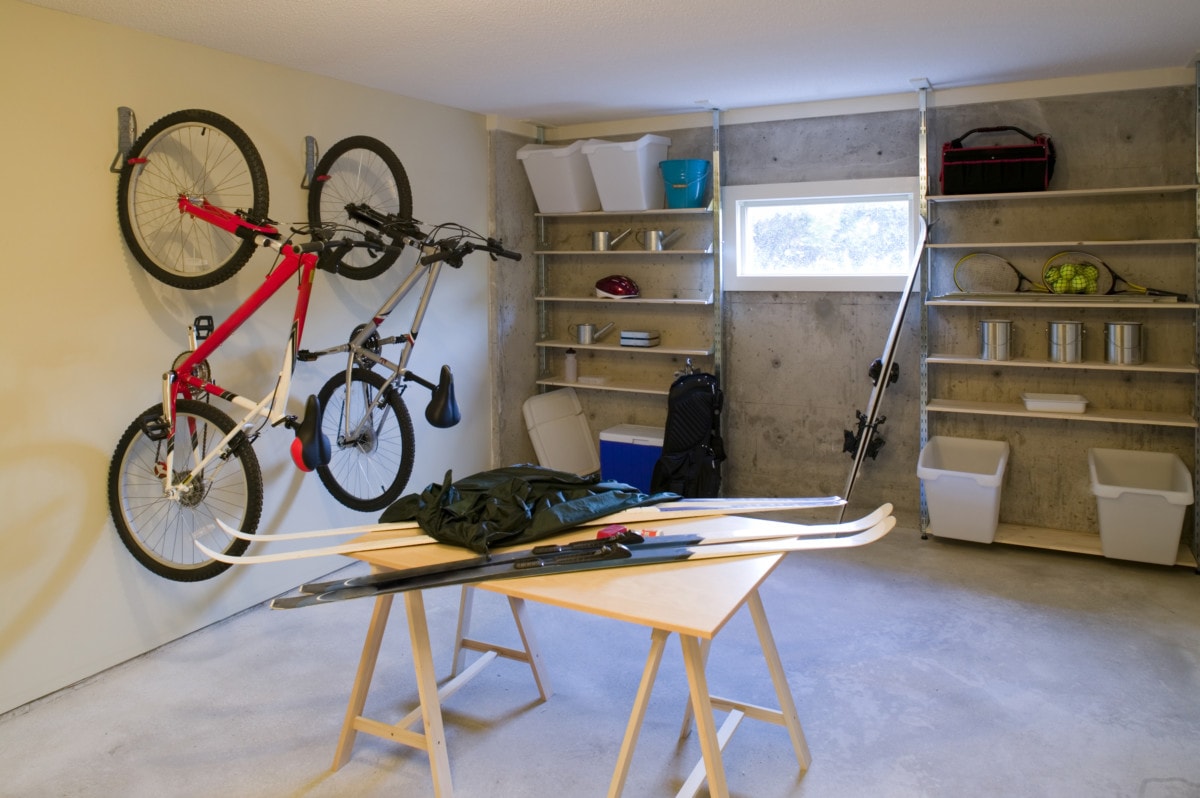
30. Organize your bathroom
Keeping your bathroom organized is essential to a clean and organized home. To organize it on a budget, “look at utilizing storage behind and over the toilet, like tall kitchen racks,” advises Adriano Tori, founder & CEO of RexMont Real Estate. “You can place a tall rack over the toilet and effectively maximize the empty wall space behind the toilet,” he says. “Utilize height, wall space, and nooks and crannies to organize without doing a full remodel.”
31. Take photos to document your decluttering process
After organizing your home, maintaining it may seem like a breeze. However, many people require help maintaining their organizational systems. If you’re finding yourself moving clutter around without putting it away, “consider taking photos of it for a week,” suggests Jeni Brown, owner of Savvy Spaces Organizing. “These photos will give you insight into what items need a more convenient home and which organizing systems you need to tweak.”
32. Invest in accessible shelving
It’s common to lose track of food and other small items because of inconvenient storage. “Custom pull-out shelving can make these hard-to-reach items more accessible and help keep them from going to waste,” says Drea Montali, owner of Dream Organization and ShelfGenie of West Brooklyn
33. Use disinfectant for dusty spaces
Cleaning is an essential part of the organizing process. However, you first need to declutter your space. When you’re done, choose a room and “clean every inch of surface space above and below your desk,” recommends Cory Cook, Time Management and Productivity Coach. “Then, thoroughly disinfect any equipment, such as computers, laptops, and mice,” she says. “Repeat this process on a regular basis throughout your home.”
Organizing, moving, and donating all create a lot of dust. “Before you start any major project, make sure to arm yourself with a reliable disinfectant spray,” suggests the team at Sterifab. “Look for one that leaves no trace and is safe for use around animals and children.”
34. Planning a big move? Consider an estate sale
Estate sales can be a good option for some homeowners. “Many estate sale companies offer a clean-out service for an added fee of anywhere from $1,000 to several thousand depending on the amount of items,” says Bryan McDaniel, owner of EZDownsizing, an online auction and estate sale solutions company. “Make sure to donate or store anything you want to keep, as clean-outs are thorough and usually leave the residence spotless,” he says. “Be wary of estate sale companies offering clean-out services and ‘donating’ or disposing of everything that is unsold at the conclusion of an estate sale.”
35. Consider virtual organizers for flexible, efficient help
Sometimes, you just need help getting your home organized. If this is the case for you, try calling a Certified Virtual Organizer. “Virtual organizers create step-by-step, customized, guided organization systems to help homeowners and small businesses declutter their spaces,” says Sheila Delson, Certified Virtual Professional Organizer with The Virtual Professional Organizer. “These services are usually in real time via live video conferencing,” she says. “It can be a highly flexible, efficient, and cost-effective organizing service for any home.”
The post Mulberrys Featured in Redfin Home Organization Article appeared first on Mulberrys Garment Care.

